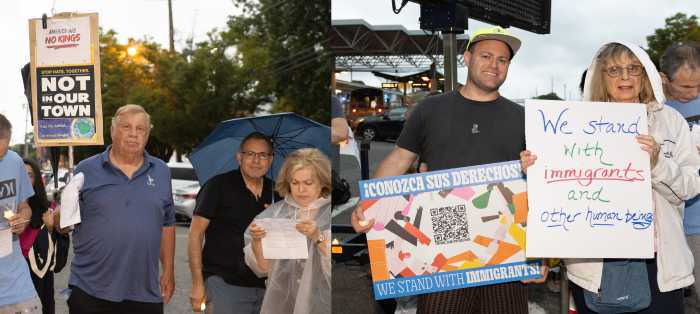Fifteen dollars per hour for fast food workers in New York? Yes, it can and should be done.
As hearings to consider raising the pay of fast food workers continue, the New York State Wage Board convened by Governor Andrew Cuomo has the opportunity to make a real difference in the lives of hundreds of thousands of fast-food workers across the state by raising these workers’ hourly pay to $15.
New York State is home to over 180,000 workers in the fast-food industry, and Nassau and Suffolk counties to nearly 24,000 of them. There are 2,315 fast-food restaurants on Long Island paying average annual wages of $16,363, which in a high-cost region like Long Island, is not nearly enough to survive without relying on public assistance.
A living wage for a single adult without kids on Long Island is $13.43 an hour, showing how modest the demand for $15 an hour really is. Setting a $15 an hour wage floor in New York’s fast-food industry would set thousands of workers on a path to self-sufficiency, and certainly the billion-dollar fast-food industry can afford to ensure that their employees are able to survive without food stamps.
The fast-food industry can transition to a $15 minimum wage without reducing profits or shedding jobs. According to economic modeling by the University of Massachusetts, tapping into savings from reduced staff turnover and increased revenue from projected industry growth will cover the cost of fair wages for employees. The fast-food industry has some of the highest rates of turnover—as high as 120 percent. On average, employee separation in the fast-food sector costs $4,700 each time a worker leaves his or her job—a significant expense for employers that can be lowered when better wages keep workers in their jobs. The University of Massachusetts study estimates that an annual price increase of just 3 percent (or a 12-cent increase on the price of a Big Mac) can be easily absorbed by fast-food customers. This small price increase, combined savings from lower rates of turnover, is more than enough to cover a $15 wage for fast food workers, according to the study’s authors.
A transition to $15 in New York would be even easier than what was modeled by the University of Massachusetts, since fast-food wages in New York are already somewhat higher than those nationally. As a result, a wage increase to $15 would represent a smaller increase to payroll costs, leading to diminutive price increases and a smoother experience for employers, workers and customers, alike.
In areas of the country where the minimum wage increased, the restaurant industry has thrived and even outperformed surrounding regions. In 2013 in San Jose, CA, for example, the number of hires in the fast food industry accelerated after the city’s voter-approved higher minimum wage was implemented. Soon, the San Jose area beat the entire state of California in employment gains. And after an earlier minimum wage increase in San Francisco in the mid-2000s took effect, employment of food-service workers grew by more than 17 percent, outpacing the employment gains in neighboring Bay Area counties.
The movement to improve pay for fast food and other low-wage workers began in New York in 2012 and in less than three years it has spread throughout the nation, winning tangible wage raises for millions of workers. In New York, fast-food workers are closer than ever to seeing significant improvements in their pay. The Wage Board has a unique responsibility to lift fast-food wages to $15, and ensure that workers in New York’s fast-growing fast-food industry can live on the pay they’ve earned.
—Yannet Lathrop
Policy Researcher at the National Employment Law Project

































